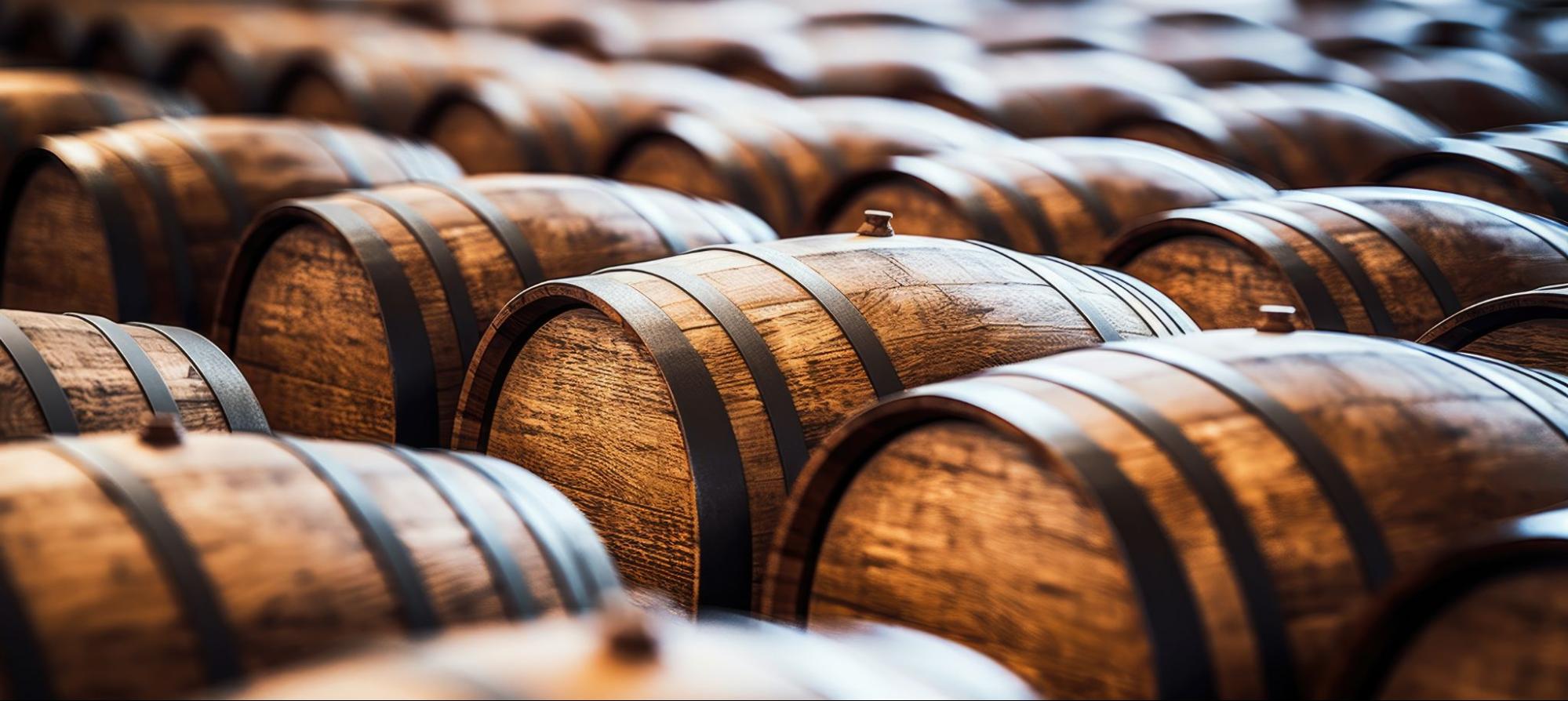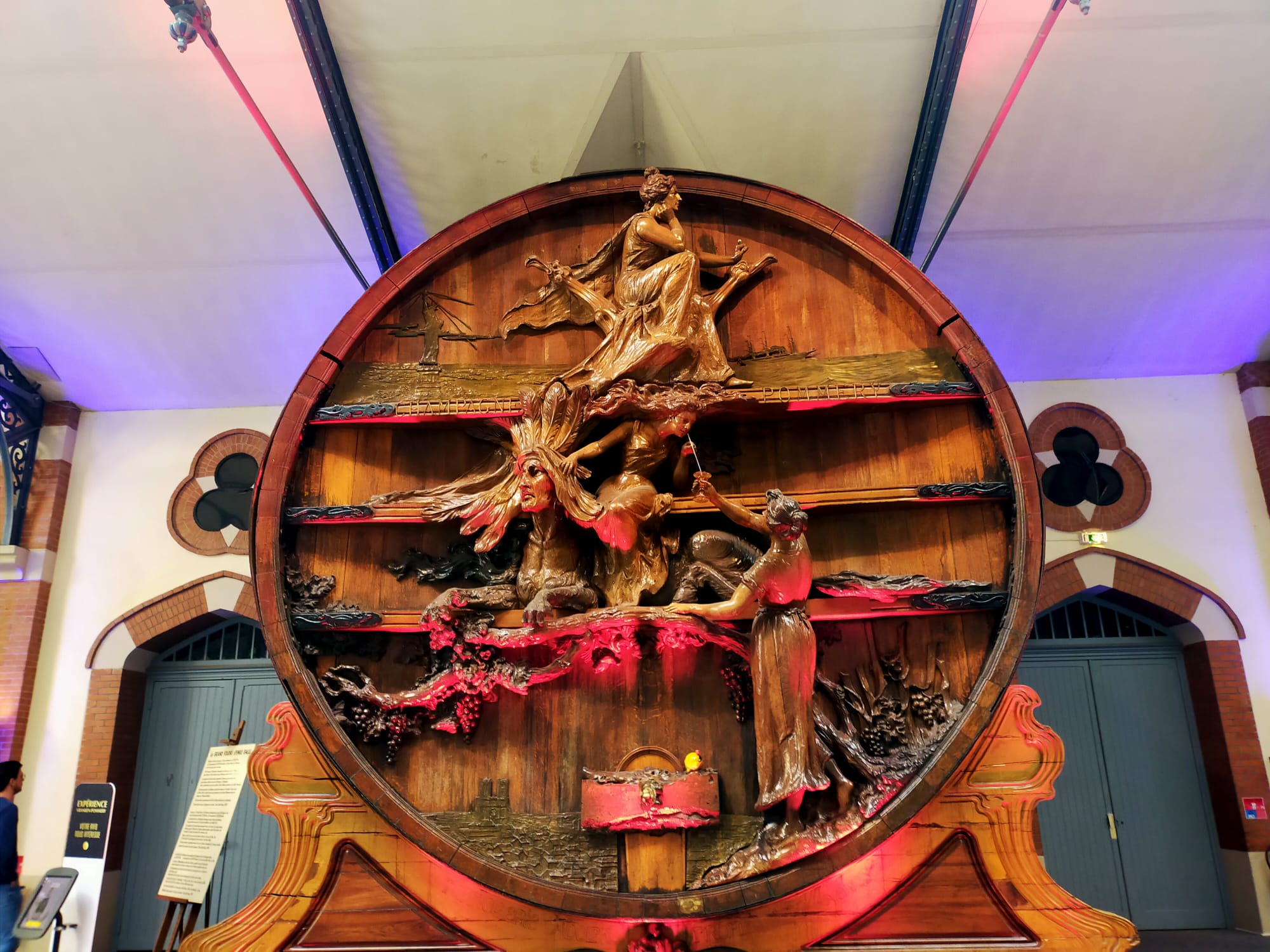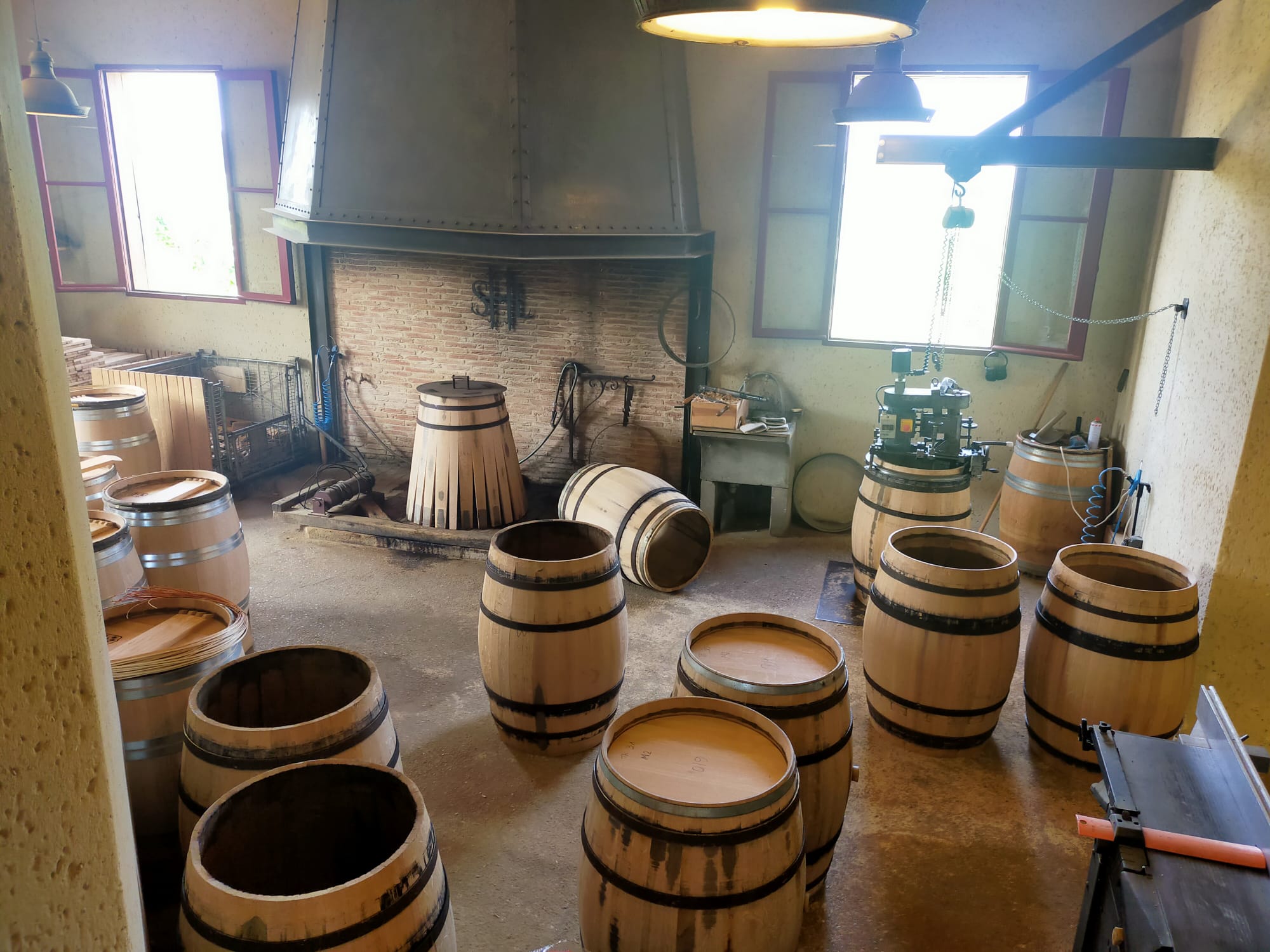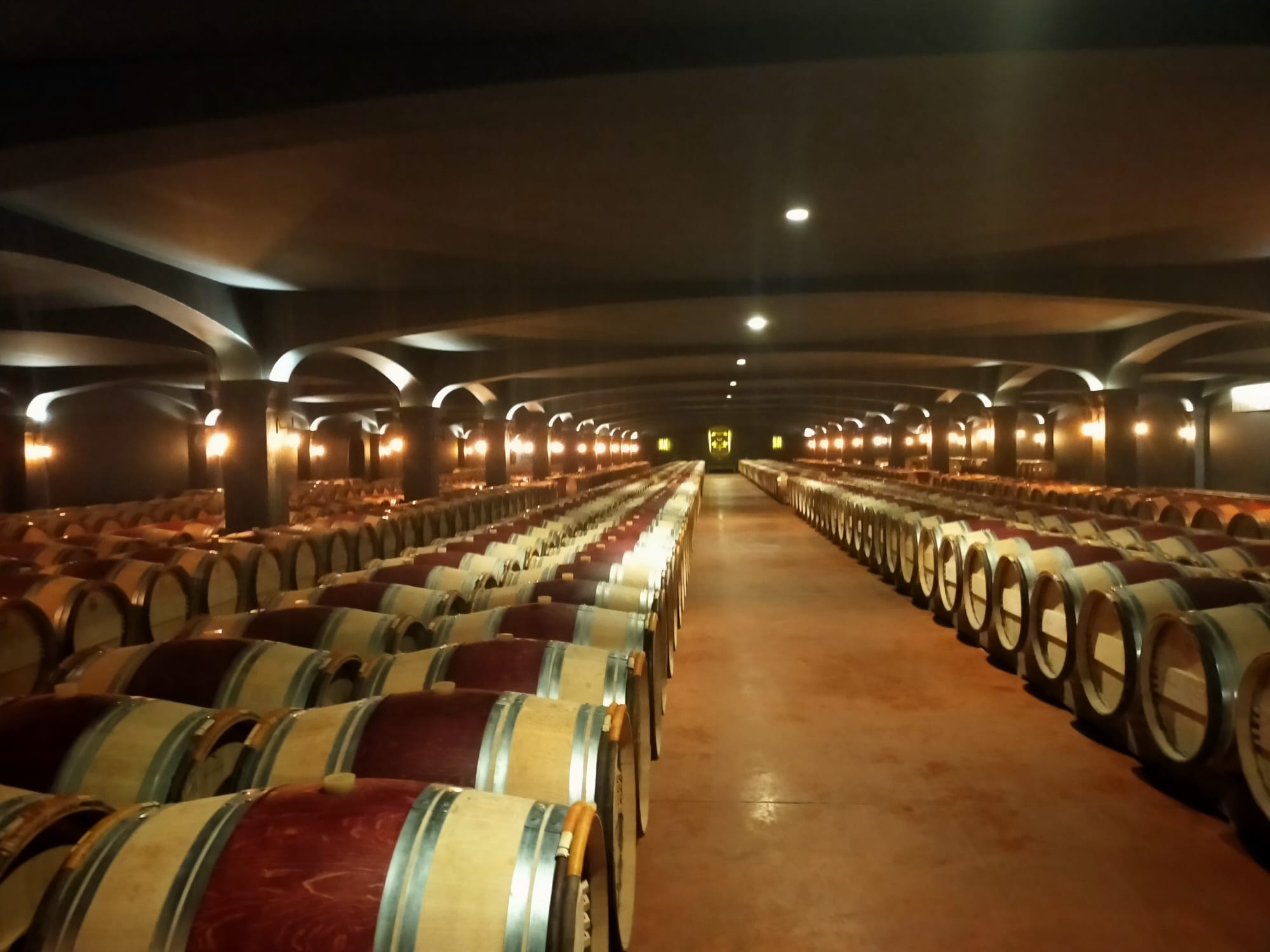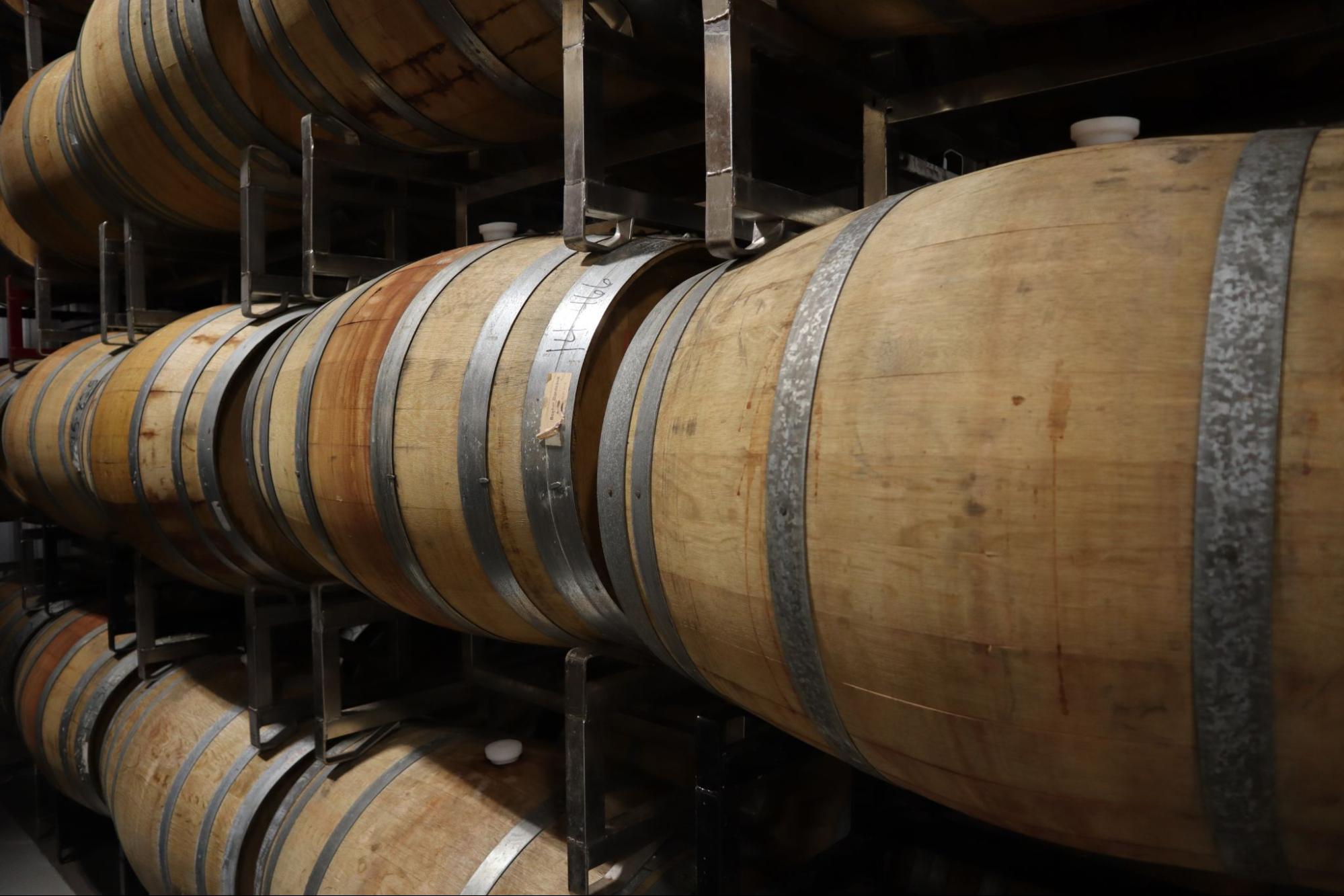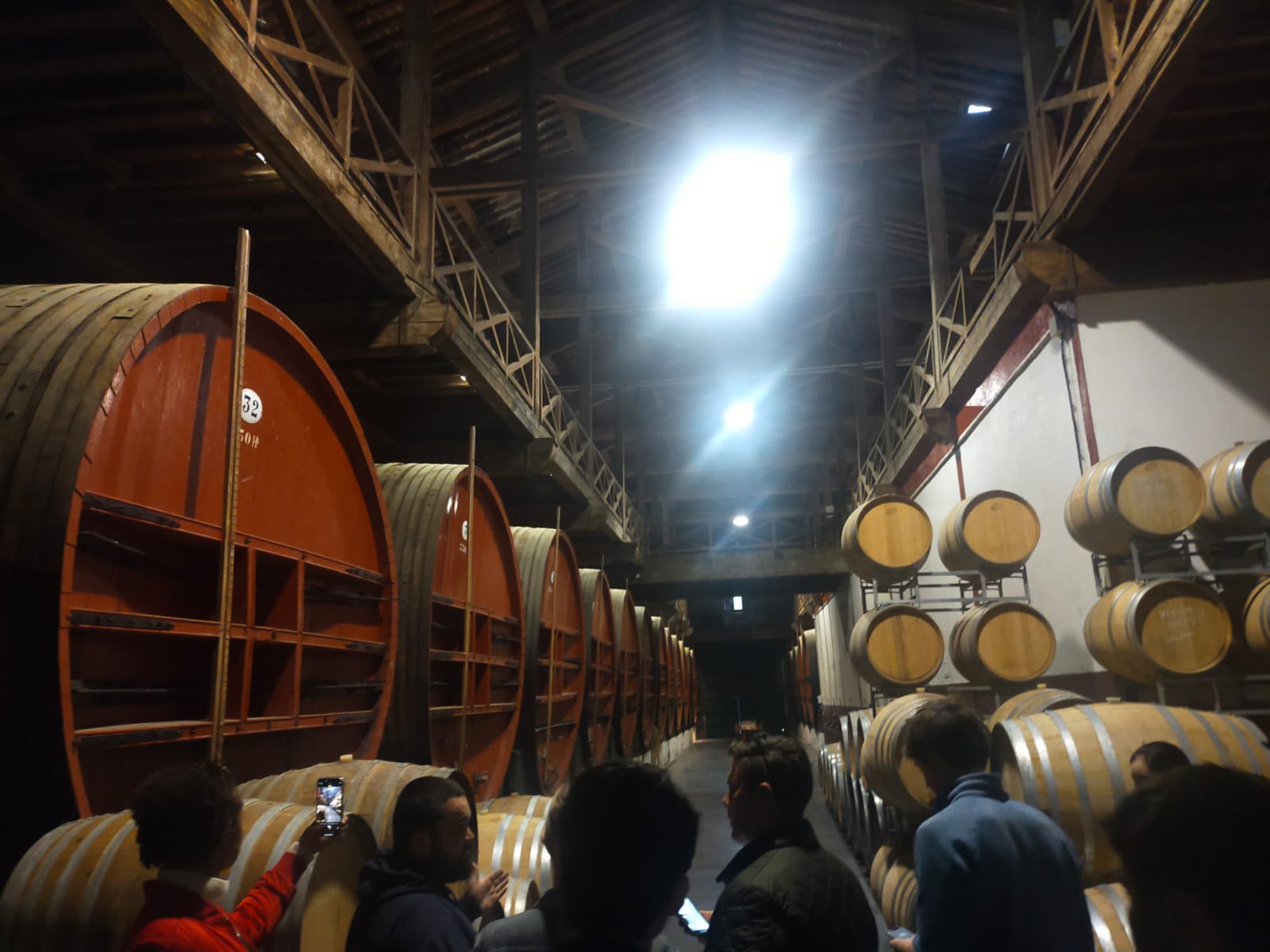- Wine Color/Type
- Top Occasions
- Unique Wines
- Surprise Me!
What's the Deal With Barrels?
Vanilla, full body, grainy tannins, maybe a hint of chocolate, and the occasional woody sensation. A delight for some wine aficionados, a nightmare for others. However, oak wields its influence over a wine's complexity and structure on multiple levels, sometimes adding to its overall character without directly affecting the taste.
Confusing? Yes, it's wine, the world where writers have a knack for making things seem more complicated than they are. In this edition, we are diving into the basics of oak and its influence.
Wooden oak Port barrels in neat rows (Photo: Lubos Chlubny, stock.adobe.com)
First, a Little History
The primary oak forests for wine production are predominantly found in France or the US. Notable forests such as Troncais, Limousin, and Vosges in France, along with regions in the Midwest of the United States. Many wine enthusiasts love the notion that these forests were essentially planted with wine in mind. While there's some truth to this, the initial idea behind their cultivation dates back to Louis XIV's minister, Jean-Baptiste Colbert in the 17th century, who aimed to supply the French Navy.
Given that oak trees take approximately 200 years to mature, requiring a long-term strategy in their management, including felling and replanting. It might sound ancient, but oak trees can live for over 1,000 years, highlighting the commercial efficiency.
Similar stories unfold in other countries with substantial oak forests, although political landscapes vary. The late 19th century saw a significant shift with the emergence of ironclad warships in 1859, rendering the strategic importance of oak forests less crucial. The rise of these vessels led to a decline in demand for wooden-built ships, as highlighted during the American Civil War in 1862.
Nevertheless, oak forests continue to play a vital role in our ecosystem, providing habitat for wildlife and attracting tourists, mountain bikers, and hikers. They also play a crucial role in carbon capture.
Even today, specially designated oak forests are carefully managed and monitored. Foresters oversee the harvesting and replenishment of trees, striving to maintain a balanced ecosystem within their woodlands. In keeping with tradition, today's stewards must consider the needs of future generations, knowing that they will not live to see the full results of their efforts.
Outstanding craftsmanship at Champagne Pommery; however, the barrel does not contain wine. (Photo: Peter Douglas)
Crafting the Barrel
Once the oak is harvested, it's left to dry for a stretch, anywhere from two to ten years, depending on its quality. Then comes the chopping and shaping into small planks, forming the staves of the Barrique. Some pieces are set aside for the barrel's feet and heads. After that, it's time for the toasting, right over an open fire.
The toasting process works its magic, making the staves elastic to tighten them up. The wood's natural wood sugars, like vanillin, get caramelized.
The level of toasting makes a big difference; the higher it is, the less you'll notice the oak influence. Lightly toasted barrels bring out more oaky notes, while the heavily toasted ones lean towards a sweeter vibe.
The winery Smith-Haut Lafitte in Bordeaux produces its own barrels. (Photo: Peter Douglas)
Afterwards, the iron rings are manually hammered down to tighten the barrel. The lids are inserted just in time before it is sealed. A new barrel is born.
In the cellar, that first fill of oak brings out the boldest oak flavors. Wineries have their own strategies for oak usage—some keep it low, maybe just 10% of the blend, while others go all in, hitting 30% or even 100%.
Most prefer applying used barrels to let the fruity character of the wine shine through without getting overshadowed by oakiness, focusing on early accessibility. Who wants to wait 20 years to drink wine anyway?
Even after their wine-filled days are done, barrels find new lives as furniture, flower pots, or they're simply recycled.
Detecting French Oak
French oak is the most common oak used for premium wines around the world. The difference from US oak lies in the grains. French oak offers a higher density grain, which requires sawing, resulting in a lower oxygen transmission rate (OTR) between the wine and the outside world. Sawing the wood to create wooden staves results in more labor-intensive work with higher losses due to sawdust.
Luxurious barriques in the cellar of Smith Haut-Lafitte, Bordeaux. (Photo: Peter Douglas)
Two barrel forms are most common: barriques of 225 liters in Bordeaux or pieces with 228 liters in Burgundy. Environmentalists can take a breath of relief as the barrels are used multiple times in wineries. Wineries with a high rate of new French oak typically lease the barrels, which are then transported to the next winery.
In general, French oak offers a finer-grained tannin structure, light notes of vanilla, and contributes to a fuller body. The structure is always very dry.
We can follow some rules of thumb for wine ageing. The percentage of new and old oak is depending on the winery and will not be considered:
- Pinot Noir: Between 9-12 months
- Chardonnay: 6-12 months
- Red Bordeaux-Styles: 9-18 months
- White Bordeaux Styles: 6-9 months
- Premium Malbec: 6-12 months
Uncle Sams Oak
The biggest advantage of American Oak is its efficiency. The oak grows faster than its French counterpart, resulting in a lighter grain. This characteristic allows the oak to be split, reducing labor costs and production losses. The commercial benefits translate into lower production costs, thus a lower purchase price per barrel. Yet, in terms of quality, American Oak is considered equal to the luxurious French wood.
Common traits include its coconut and sweet character. Wines with a high percentage of new American oak often exhibit overt sweet spice, even in dry wines. These wines are highly distinguished and popular worldwide. Some modern Bodegas in Rioja extend maturation in a high percentage of new oak to maximize the effect, through extended maturation of 18 months and beyond.
Common maturation times are:
- Red Rioja: 12 - 18 months
- White Rioja: 6-9 months
- American Zinfandel: 6-12 months
- American Bordeaux Blends: 9-18 months
- Malbec: 6-9 months
- American Chardonnay: 6-9 months
Other Oak Styles:
The French and American were not the only countries with a navy or wood-hungry military, which led to the production of further specialized oak forests. Most frequently found are Hungarian or German oak. Both possess similar qualities to French oak but are produced to a lesser extent. Hungarian oak imparts a light nuttiness to wines, which is popular in neutral grape varieties. German oak is often utilized for large casks for Riesling, aiming for neutrality.
Closeup shot of rows of wine barrels aging wine in a winery in Texas (Photo: Eric Twohey/Wirestock, stock.adobe.com)
The Bigger the Better - Fuders, Botte & Co.
The largest vessels are favored for their neutrality. Their large size allows for a lower wood-to-wine surface ratio, resulting in a lower oxygen transmission rate compared to smaller barrels, thereby enabling a slower maturation process.
These expansive vessels can range from 200 to over 5,000 liters in capacity. Often, these barrels are 50, 100, or even 200 years old. However, the oldest barrels require maintenance and may occasionally be prone to leakage. If one stave becomes defective, replacing it becomes impossible, as introducing a new stave would alter the flavor profile of the wine.
The size and age of these vessels offer the advantage of allowing wines to mature and develop over an extended period without imparting overly oaky flavors, but rather contributing to their structural elements. Tannins mellow, resulting in a fuller body and a higher complexity of dried fruit aromas. However, flavors such as chocolate, vanilla, and sweet spices have already been extracted by their predecessors, underscoring their neutral characteristics.
On the left, the large Fuders of Mas Amiel in France steal the spotlight. These barrels, around 200 years old, contain fortified wines dating back to the 1960s, filled with the highest quality vintage wines of Maury. (Photo: Peter Douglas)
These vessels are referred to by different names in different languages. Italians call them Botte, in Portugal they are known as pipes, in France they are called fudres, and in Germany, they are referred to as Fuder.
Maturation times vary depending on the wine:
- Chianti Classico: Minimum 12 months in Bottle
- Chianti Classico Riserva: Minimum 24 months in Bottle
- Chianti Classico Gran Selezione: Minimum 30 months in Bottle
- German Riesling: Approximately 9-18 months in Fuder
- Maury: Can mature over 30-60 month in fudres. The barrels are only filled to 20%-30% capacity to promote oxidation.
- Douro: Depending on the style, Port wines can mature from 6 months to 10+ years in fuders. Locally, they are referred to as “pipes” due to their tall and narrow shape. Some even hold 50,000 liters or more.
- Barolo and Barbaresco: Sometimes matured in large oak vessels for 9-18 months.
The Barrel-Alternatives
Some producers are opting to move away from traditional oak barrels due to the high costs associated with maintenance, topping them up, and frequent cleaning. This shift has prompted the development of alternatives to simulate oak maturation, with oak chips or staves being the most prominent options.
While this move may raise some wine lovers' eyebrows, it presents a great opportunity for entry-level wines to enhance their complexity. Oak chips can be contained in small bags and removed once the desired flavor profile is achieved. Moreover, controlled oxygen ingress (for those who want to know: it is called “Microoxygenation / Microx”) facilitates the integration of oak character into the wine. However, there is ongoing debate about whether oak chips and staves can achieve the same quality as traditional barriques.
In the latest advancements, Modern Cooperage offers stainless steel barrels with options for inserting wooden staves and controlled oxygen ingress. This setup allows for precise dosing of oak influence, allowing the integration for new, old, lightly or heavily toasted, and various origins of oak. Not only are these barrels easy to clean, but they also feature the option to insert a small handle to stir the lees for batonnage, reducing labor-intensive work and unwanted oxygen exposure.
Their competitor BarriQ, which deviates from the traditional barrel shape, is formed as a box. These containers permit controlled oxygen ingress and oak maturation using chips or staves, while accommodating larger wine volumes and enabling stacking to save space within the winery.
According to both suppliers, premium wineries are adopting their solutions for cost-effective wine processing. The reality likely lies somewhere in between.
Oak presence in wine, whether direct or indirect, significantly influences the final style of the wine. The various shapes, forms, and maturation processes impart distinct characteristics to the wine. When tasting wines, it's worthwhile to refer to the producer's website for insights into their oak treatment practices. With practice and experience, wine tasters can develop the ability to discern the percentage of oak used, as well as its origins and newest influences, enriching the tasting experience and deepening appreciation for the complexities of wine.
One last Geeky Fact
French oak is scientifically known as Quercus robur, reflecting its hardy nature, while American oak, referred to as Quercus alba, is named for its white color and distinctive appearance. Interestingly, the natural color of oak is grey, despite the common perception of its finished wood.
Peter Douglas
Latest articles

